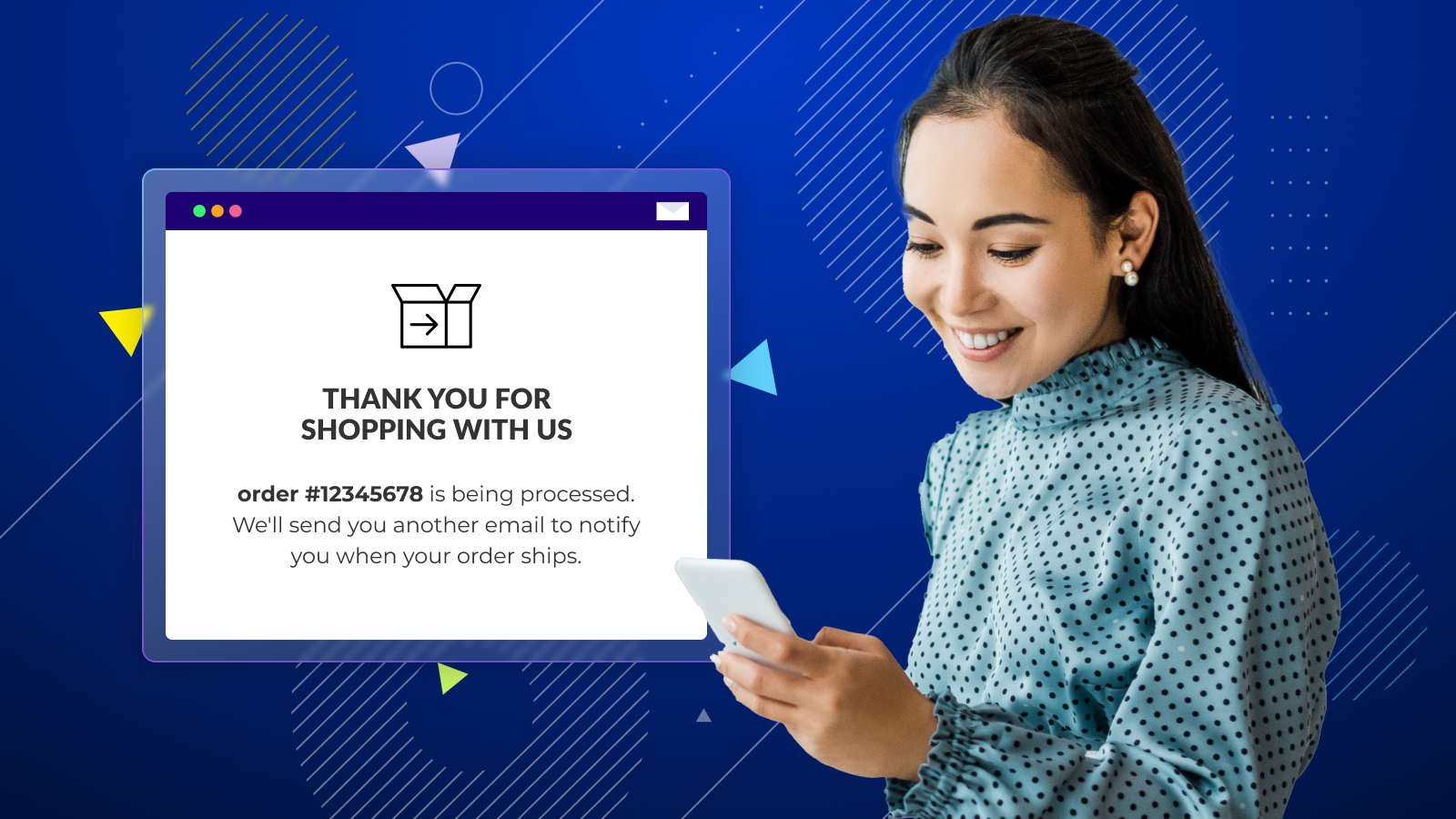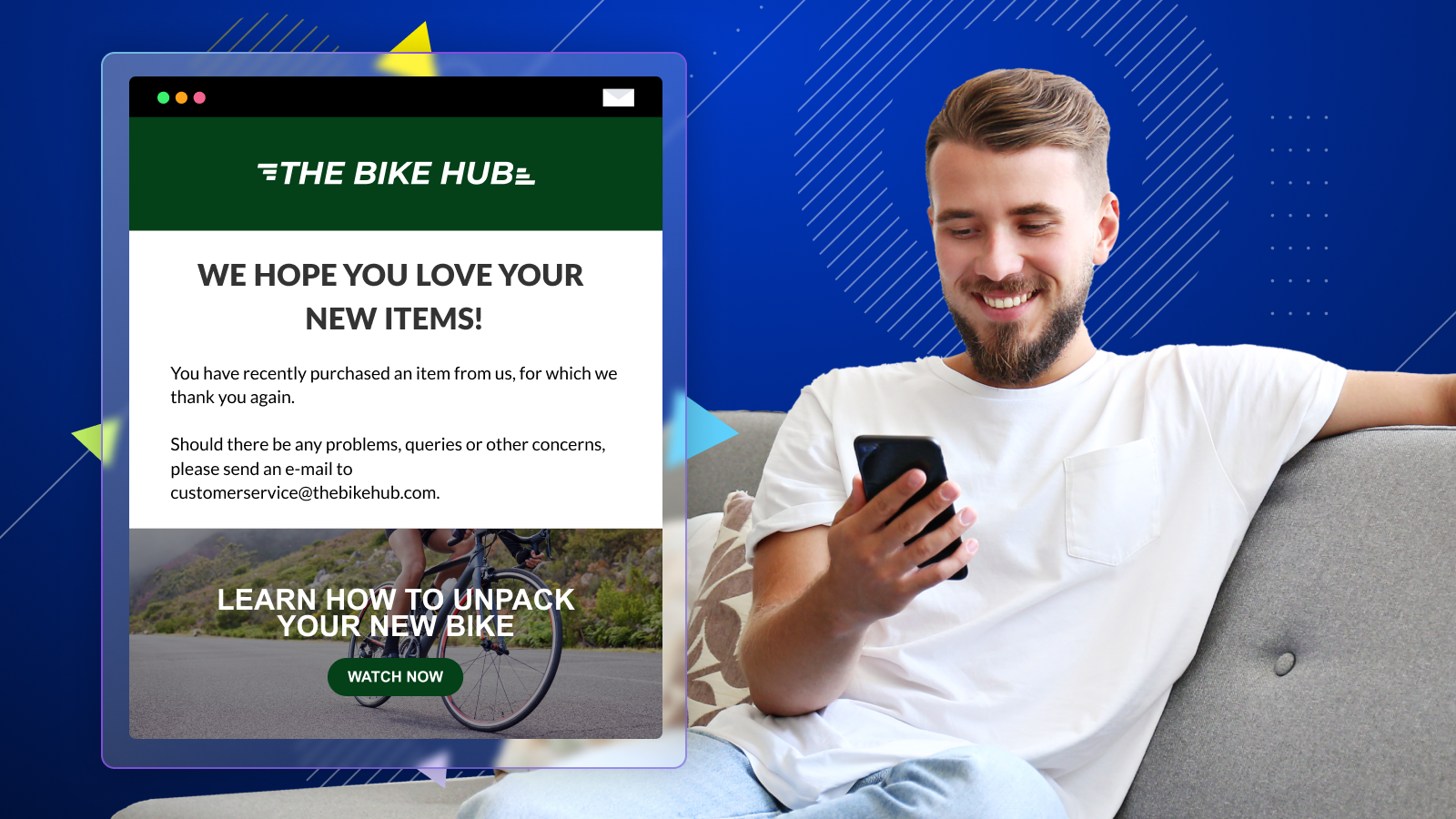Contents
Improve your post-purchase emails with parcelLab's Engage product suite.
Learn moreWhat are branded emails?
Published on: September 20, 2023
Updated: November 17, 2023
Branded emails in ecommerce are emails specifically designed to reflect a retailer’s brand, values, and identity. These messages are crafted with a consistent visual design that aligns with the look and feel of your other branded assets (i.e., your logo, website, etc.)
Branded emails are often part of a broader marketing strategy, and the goal is to create a cohesive and recognizable experience at every touchpoint.
Needless to say, branded emails are an important aspect of any ecommerce marketing strategy. As Bob Frady, co-founder of HazardHub puts it, “Not enough talk about the importance of brand in email. Customers don’t sign up for email—they sign up for your brand.”
What are the different types of branded emails?
Branded emails come in various forms. In the realm of ecommerce, the most common types include:
- Welcome emails. When a customer signs up or makes their first purchase, a branded welcome email helps you make a strong first impression.
- Order confirmations and updates. Branded emails confirming an order or providing ecommerce tracking updates help build trust and assurance—all while reinforcing your brand. They’re much more appealing compared to third-party tracking emails. Plus, branded emails can be used as cross-sell or upsell tools.
When implemented correctly, you can use these messages to engage in post-purchase upselling or cross-selling to encourage additional purchases.
- Promotions. Regularly sending branded emails with updates, special offers, or new products helps maintain engagement with your customers. (Note: as with any promotion, your messages must comply with FTC guidelines, so keep this in mind when sending promo emails.)
- Customer support. Consider extending the power of branded emails to your support comms. That way, shoppers have a consistent experience across their entire journey.
- Feedback requests. If you’re requesting product reviews and feedback (and you totally should), having those emails be consistent with your brand may increase engagement and responses.
- Seasonal emails. Marry your brand with seasonal themes to create a cohesive and appealing promotion for holidays or special sales events.
How do you create branded emails?
Creating branded emails requires a combination of strategy, design, and technical know-how.
For starters, you (or whoever is creating the branded email) must understand your brand’s visual identity. This includes color schemes, logos, tone of language, and overall messaging.
Write the content. Your specific messaging will depend on the email, but common best practices include implementing personalization and adding a strong CTA.
You should also ensure that your emails comply with regulations such as the CAN-SPAM Act or GDPR in Europe. This includes having a clear unsubscribe option and not sending unsolicited emails.
Design the branded email. Already whipped up the content? The next step is for the designer to craft the actual elements of the email, which can include things like:
- Header
- Colors
- Fonts
- Images
- Icons
- Footer
Pro tip: Ensure that your email design is responsive so that it looks good on all devices, especially mobile, where many people check their emails.
Test and preview. Use the preview and testing tools available in your email platform to see how the message looks in various email clients and devices.
Schedule and send. Once everything is in order, schedule and/or send the email.
How do you send branded emails?
The process for sending branded emails depends on two things: the types of emails you’re creating and the platform or software from which you’re sending messages.
Pre-purchase marketing emails such as welcome messages and promotions are typically sent from your marketing automation software (e.g., Hubspot, Mailchimp, Marketo, etc.). Meanwhile, post-purchase communications such as order confirmation emails, delivery updates, and last mile tracking messages are sent through your post-purchase platform.
Whatever the case, follow the steps and processes on the platforms you’re using. Many branded emails can be automated. As such, you need to configure the necessary rules and automations on the backend to ensure the right emails are sent at the right time.
What’s the difference between branded emails and non-branded emails?
Branded emails are geared towards marketing, engagement, and building a cohesive brand experience. In contrast, non-branded emails are more functional and transactional in nature.
Also, branded emails contain elements that reinforce a company’s brand identity (e.g., consistent colors, voice, etc.). Meanwhile, non-branded emails lack these elements, so they’re more suitable for basic notifications and for brands that aren’t trying to build relationships with customers.
| Branded emails | Non-branded emails | |
|---|---|---|
| Visual identity | Contain the company's logo, color scheme, fonts, and other visual elements that align with the brand's identity | Don’t contain branded visuals |
| Messaging | Use a tone and style consistent with the brand’s voice | Use a generic style that doesn’t align with the brand |
| Objectives | Build customer relationships, generate engagement, drive traffic | Basic communications and automated notifications |
| Use cases | Marketing emails and post-purchase messages | Technical notifications, password resets, and other non-marketing messages |
Learn More About parcelLab's Product Suites
Provide a predictive delivery date that increases conversions, reduces uncertainty, and improves customer satisfaction.
Learn moreEnhance your post-purchase journey with personalized communications that keep customers informed every step of the way.
Learn more Retain
Retain
Turn potential customer dissatisfaction into an opportunity for revenue retention by digitizing your returns process.
Learn moreTransform Your Post-Purchase Experience
Learn more about how parcelLab can get you up and running quickly.
Demo
